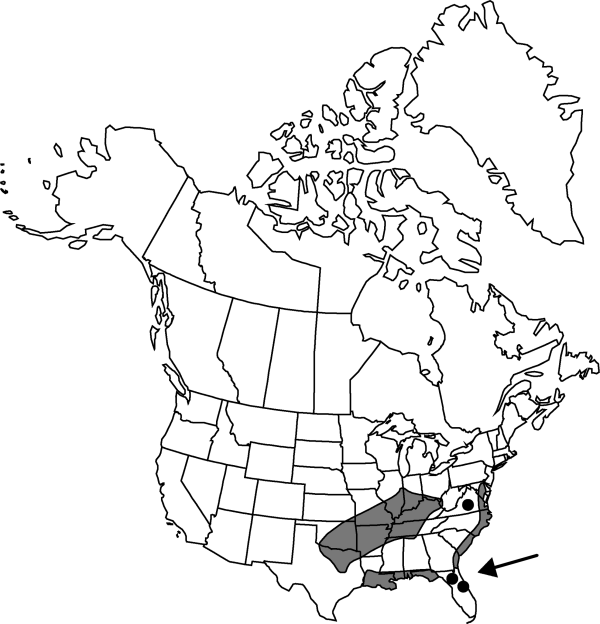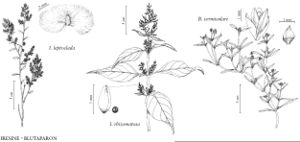Iresine rhizomatosa
Proc. Biol. Soc. Wash. 28: 172. 1915.
Herbs, perennial, 3–10 dm, stoloniferous. Stems erect, largely simple proximal to inflorescences, villous or glabrous. Leaves opposite; blade ovate to elliptic, 6–15 × 2–7 cm, apex acute to long acuminate, sparsely pubescent. Inflorescences: panicles 7–30 cm; bracts and bracteoles of staminate and pistillate flowers shorter than tepals. Flowers: tepals white, ovate, 1–1.3 mm, hyaline, apex acute to acuminate, densely lanate. Utricles exerted from tepals, greenish white, ovoid, 1.1–1.5 mm, apex rounded. Seeds 0.5–0.8 mm.
Phenology: Flowering fall.
Habitat: Sandy alluvial soils of low woods, depressions, sand dunes, along rivers, sandy bluffs
Elevation: 0-200 m
Distribution

Ala., Ark., Fla., Ga., Ill., Ind., Kans., Ky., La., Md., Miss., Mo., N.C., Okla., S.C., Tenn., Tex., Va.
Discussion
Iresine rhizomatosa has occasionally been called I. celsioides Linnaeus, a misapplication of that name.
Selected References
None.
